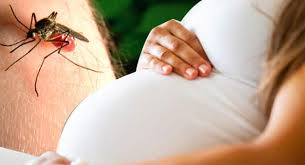Malaria, a life-threatening disease caused by parasites transmitted to people through the bites of infected mosquitoes, poses a significant threat to pregnant women and their unborn children. The prevalence of malaria in pregnancy (MiP) varies across regions, with sub-Saharan Africa bearing the greatest burden. In these areas, pregnant women are at an increased risk of contracting malaria due to reduced immunity, making them more susceptible to severe complications such as severe anaemia, placental malaria, and low birth weight.
The impact of MiP is profound, extending beyond the health of the mother to affect the development and well-being of the unborn child. Malaria in pregnancy is a leading cause of maternal and infant mortality and morbidity in endemic areas. It can lead to maternal anaemia, which increases the risk of maternal death during childbirth. Additionally, malaria can cause low birth weight in infants, which is associated with an increased risk of neonatal mortality and long-term health problems such as stunted growth and cognitive impairment.
The control of MiP is a critical public health priority, requiring a comprehensive approach that includes preventive measures, early detection, and prompt treatment. One of the key strategies for preventing MiP is the use of insecticide-treated bed nets (ITNs). ITNs have been shown to reduce the risk of malaria in pregnant women and their newborns and are recommended by the World Health Organization (WHO) for all pregnant women in malaria-endemic areas.
Intermittent preventive treatment in pregnancy (IPTp) is another key intervention for the control of MiP. IPTp involves the administration of a full course of antimalarial medication to pregnant women at scheduled antenatal care visits, regardless of whether they are infected with malaria. This strategy has been shown to reduce the risk of maternal anaemia, placental malaria, and low birth weight.
In addition to preventive measures, early detection and prompt treatment of MiP are crucial for reducing the impact of the disease. Pregnant women in malaria-endemic areas are encouraged to seek antenatal care early in pregnancy and to receive regular screenings for malaria. Prompt diagnosis and treatment with effective antimalarial drugs can prevent severe complications and improve pregnancy outcomes.
Community engagement and education are also essential components of MiP control efforts. Pregnant women and their families need to be aware of the risks of malaria in pregnancy and the importance of preventive measures such as ITNs and IPTp. Health education campaigns can help raise awareness and encourage pregnant women to seek antenatal care and adhere to recommended preventive and treatment regimens.
In conclusion, malaria in pregnancy remains a significant public health challenge in endemic areas, with profound implications for maternal and child health. The control of MiP requires a comprehensive approach that includes preventive measures, early detection, and prompt treatment. By implementing these strategies, we can reduce the impact of malaria in pregnancy and improve the health and well-being of pregnant women and their unborn children.





